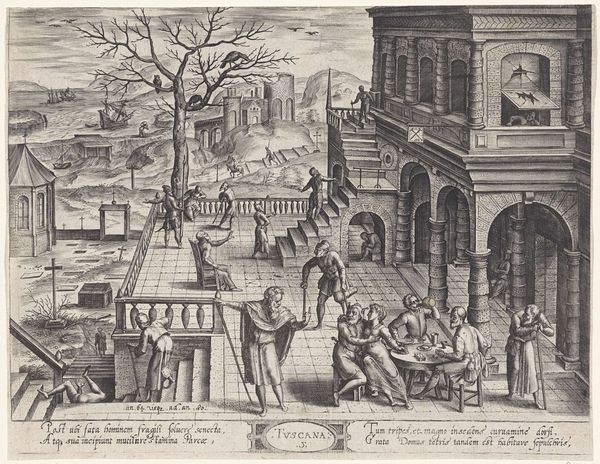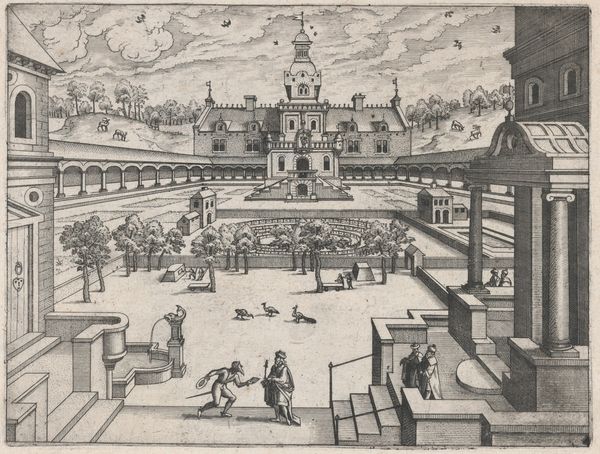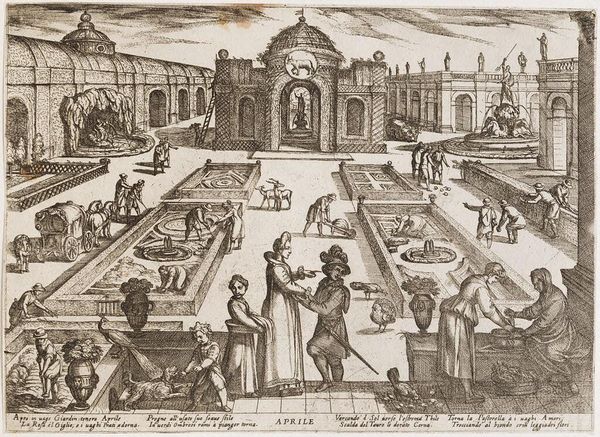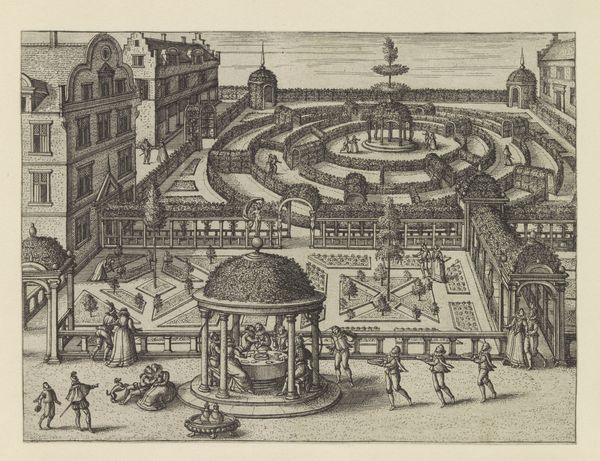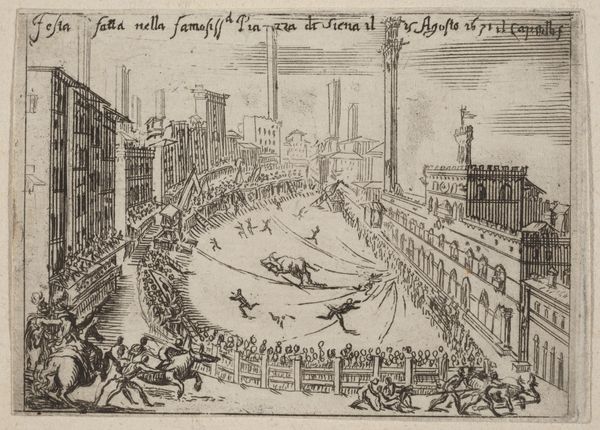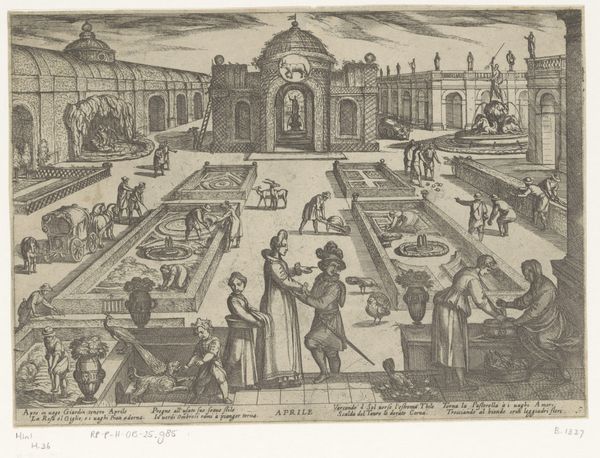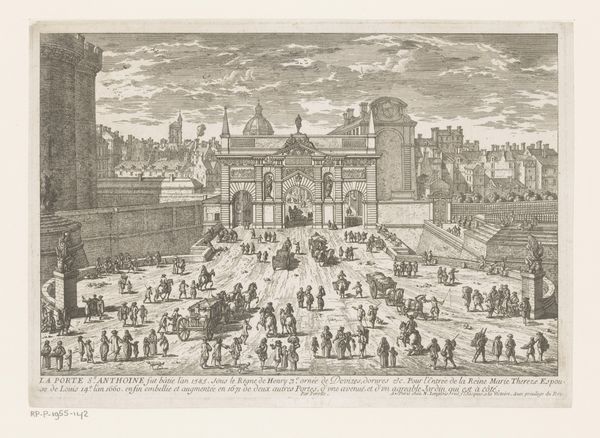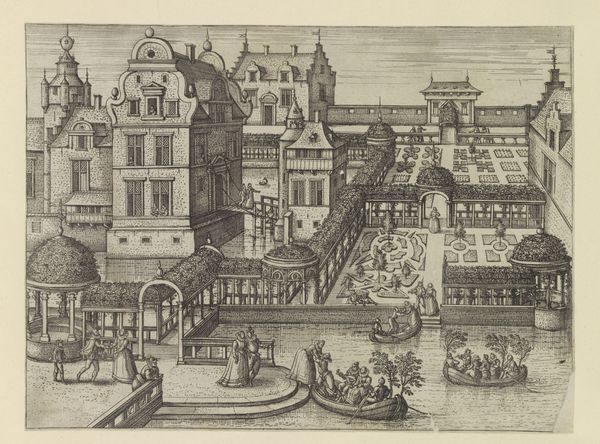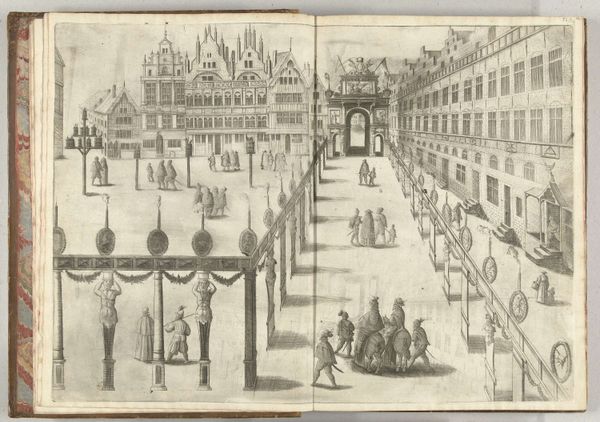
drawing, print, engraving
#
drawing
#
pen drawing
# print
#
landscape
#
11_renaissance
#
history-painting
#
engraving
Dimensions: height 209 mm, width 274 mm
Copyright: Rijks Museum: Open Domain
Curator: Right, let’s consider this rather busy print. It's attributed to Wierix, created in 1577, and is called "Van geboorte tot 16-jarige leeftijd: de composiete orde"– which roughly translates to "From Birth to Age 16: The Composite Order." It's a pen drawing engraving. Currently, you can find it at the Rijksmuseum. Editor: Wow, okay. My first thought is: what a playful yet also unsettling composition. So much energy, little bodies sprawling all over the place. It feels a bit like a Hieronymus Bosch painting, but if Bosch decided to design a playground. Curator: I appreciate that. I think it's important to understand this image in the context of the 16th century, which saw an increase in discussions around education and societal expectations of children. We can examine, for instance, the Latin inscriptions that serve as captions and analyze the architecture. They frame children within humanist principles, classical order, while implying children are naturally directed toward struggle and shadowed training. Editor: You're absolutely right about the inscriptions, but what about this sense of regulated chaos? All these kids are supposedly learning, but look at the exuberance! They're tumbling, playing games that almost seem dangerous. It's like childhood as this untamed force contained within a very structured garden. Is Wierix celebrating this vital life energy, or is he warning against its inherent messiness? Curator: That tension, that ambivalence, is exactly what makes the artwork so compelling. It points to a fundamental struggle inherent in social pedagogy; how do we cultivate without stifling, nurture without controlling? The grid and axial designs are a representation of Humanist efforts toward achieving ideal life. I believe this piece presents a nuanced social commentary on raising individuals to perform the societal ideal, a narrative complicated by the depiction of the uninhibited play of childhood, an experience in conflict with this goal. Editor: Right, and it does it with such an incredible eye for detail, capturing every little expression, every fleeting moment. The architectural structures also make me think of the complex support systems –the metaphorical hothouses – created to raise good citizens, and I find myself feeling protective and claustrophobic simultaneously! I have conflicting feelings towards the piece and my reading changes daily. Curator: Absolutely, I'm always moved by these types of pieces. What’s fascinating is its relevance, centuries later. It compels us to confront perennial questions about agency, nurture, freedom, control. It speaks to our collective history and our personal present. Editor: So true. It’s the kind of artwork that keeps revealing layers of meaning with each viewing. I'm finding its emotional and historical intelligence really impressive and resonant, which in a way I wasn’t quite expecting.
Comments
No comments
Be the first to comment and join the conversation on the ultimate creative platform.

